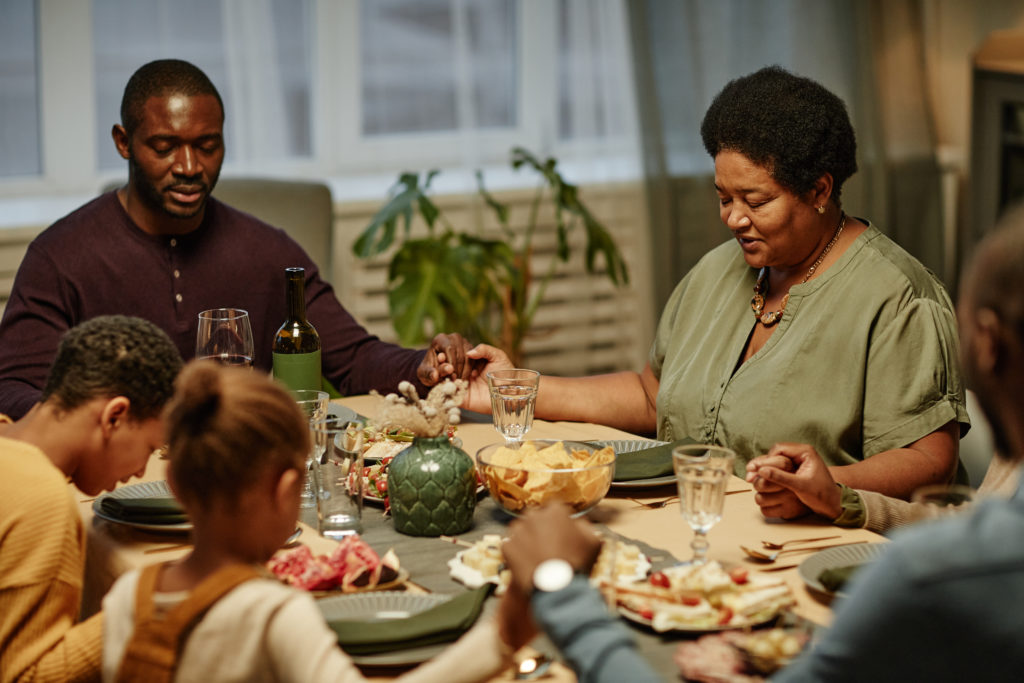The week between Christmas celebrations and New Year’s festivities is reserved for the special observance of Kwanzaa. Beginning on December 26 and ending on January 1, Kwanzaa is an annual celebration of African-American heritage, unity, and culture. Started in 1966 by Dr. Maulana Karenga, Kwanzaa incorporates the cultures, symbols and history of Africa to create richer connections among the African Diaspora.
Background
The word “Kwanzaa” means “first-fruits,” and the week-long festival was originally modeled after first-fruits celebrations from ancient Africa, which were often seven days long. All parts of Kwanzaa are unique and meaningful. Celebrations can include traditional meals, poetry, storytelling, drumming, dancing, and songs. Different families celebrate the weeklong festivities in their own unique ways, but there are some commonalities, such as the lighting of the candles in the Kinara and the inclusion of symbols on the central table. The week usually culminates with a huge feast on December 31, called Karamu
The Seven Principles
Each day of Kwanzaa, a different principle is celebrated and a different candle is lit in the Kinara to symbolize the concept. The Seven Principles (Nguzo Sabo) include:
- Umoja (Unity)
- Kujichagulia (Self-determination)
- Ujima (Collective work and responsibility)
- Ujamaa (Cooperative economics)
- Nia (Purpose)
- Kuumba (Creativity)
- Imani (Faith)

Symbols
The Kinara sits on the main table, but not in isolation. The table is generally decorated with highly symbolic items that reflect the values of Kwanzaa
- Mkeka (place mat)..on which all of the other symbols are placed; made of straw or an African cloth
- Vibunzi (ear of corn, symbolizing fertility and children))
- Mishumaa Saba (the 7 candles)
- Kikombe cha umoja (unity cup)
- Mazao (crops: fruit, nuts, veg to represent the harvest)
- Zawadi (gifts)
Usually the colors of the Pan African flag also play a big role in the celebrations and the decorations that surround the Kwanzaa environment. Like the rest of Kwanzaa, the decorative colors of the Pan African flag are also highly symbolic.:
- Red (struggle)
- Black (people)
- Green (future)
Kwanzaa is a cultural holiday and not religious, so it is often celebrated alongside other winter holidays such as Christmas and Hanukkah.

Want to learn more about Kwanzaa?
- Research and cook an African inspired feast
- Visit your local library and see what resources they have available
- Watch documentaries about Kwanzaa on YouTube
- Watch The Black Candle on Amazon Prime
- Visit the Evansville African American Museum
- Patronize a black owned business
- The Evansville Vanderburgh Public Library is hosting Kwanzaa crafts December 27-30. Learn more at their website.
We are so fortunate to be able to celebrate so many rich and diverse traditions in our community. Love is the common thread that connects all of the many traditions during this time of year. No matter how or what you celebrate during the last days of the year, may your homes overflow with joy and love, light and laughter, warmth and togetherness. From the F.C. Tucker Emge REALTORS® family to yours, Happiest of Holidays!




